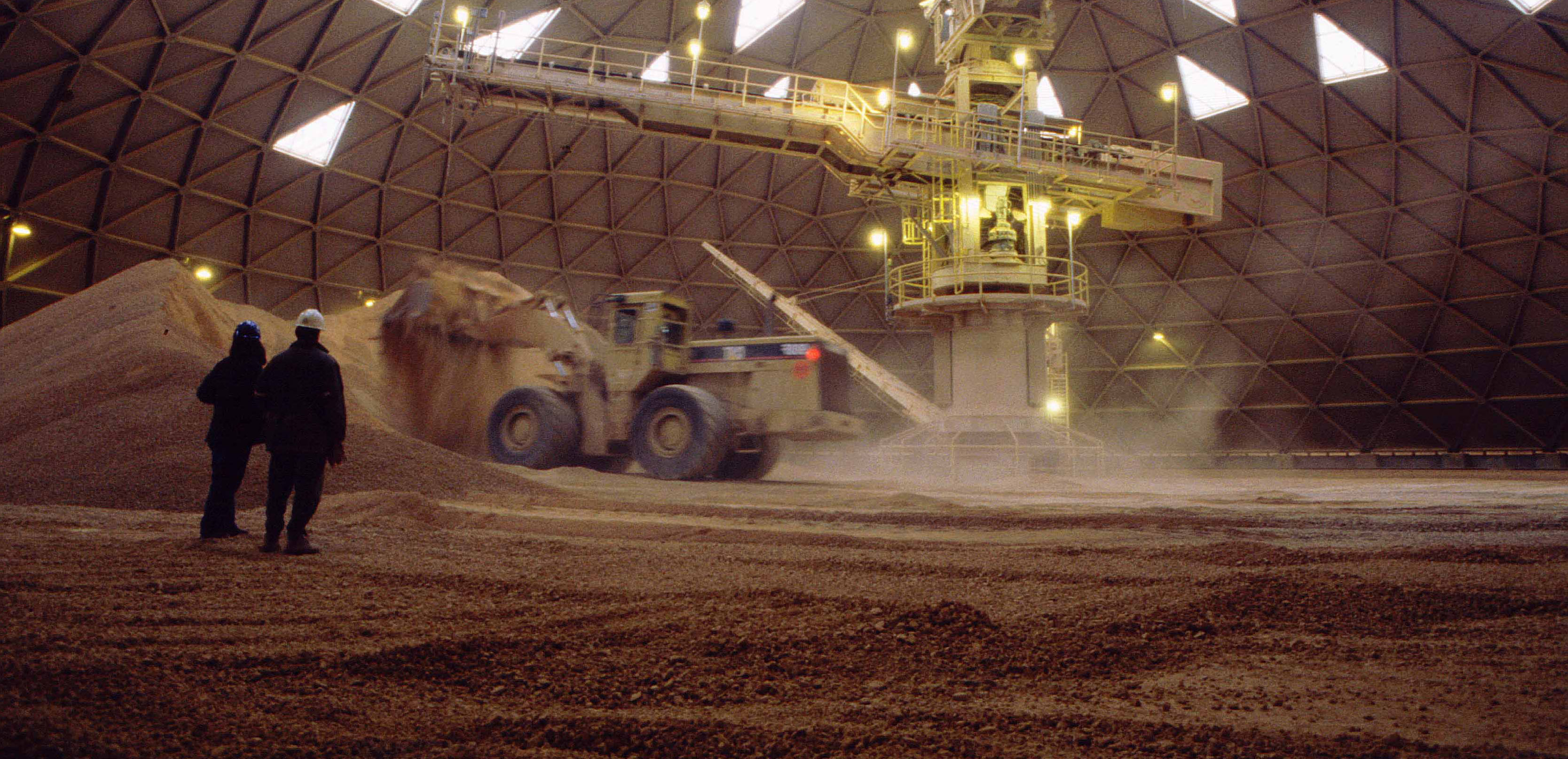COSMO Laboratory
 COSMO Laboratory -- Stochastic Mine Planning Laboratory
COSMO Laboratory -- Stochastic Mine Planning Laboratory
Professor Dimitrakopoulos’ research areas include developing new, risk-based modelling technologies for intelligent holistic mine planning, design, and production scheduling under uncertainty. These technologies are founded on stochastic modeling and optimization as well as artificial intelligence-based approaches. Ongoing research focuses on the development of simultaneous stochastic optimization of industrial mining complexes and mineral value chains under uncertain supply and demand, along with new smart self-learning decision support systems for a mining complex. These self-learning systems will learn from their own experience in order to adapt short-term production scheduling decisions in response to incoming new information, while aiming to meet strategic targets.
Geomechanics & EMERG Labs
 Geomechanics Laboratory
Geomechanics Laboratory
Professor Hassani of McGill University focuses his researcher in mining engineering and rock mechanics. Throughout his extensive career, he has led numerous laboratory and field projects focusing on key aspects of the field, including slope stability, underground mining support systems, mine backfill, rock tool interaction, and monitoring. His expertise extends to rock characterization and testing in both laboratory and field settings. Currently, Professor Hassani’s research is centered on the innovative use of microwave technology in mining operations. This includes applications in excavation, drying, and processing, aiming to enhance performance and reduce energy consumption. This cutting-edge research involves collaborations with major mining companies, resulting in significant advancements that have been published in various esteemed journals. A core pillar of Professor Hassani’s research continues to be mine backfill. His work in this area encompasses the development of paste backfill, foam fill, and frozen fill techniques, particularly for novel mining methods in Arctic regions. These advancements not only improve mining efficiency but also contribute to the sustainability and safety of mining operations in challenging environments.
McGill Mine Design Lab
 Mine Design and Numerical Modelling Laboratory
Mine Design and Numerical Modelling Laboratory
Established in 1988, McGill's Mine Design and Numerical Modelling Laboratory is engaged in a wide range of research activities in collaboration with the mining industry including: fault-slip dynamics, applied rock mechanics, rockburst phenomena, destress blasting, rock supports, numerical modelling, mining-induced seismicity, ore dilution, coal mining, mining methods and sequencing, and underground mine design. The Lab offers professional training through short courses and industry workshops, and is actively involved in the organization of international conferences on rock mechanics, mining innovation and mine safety.
McGill Mining System Dynamics Group
 McGill Mining System Dynamics Group
McGill Mining System Dynamics Group
Creation and extension of simulation platforms to support engineering projects within the minerals industry, including initial development, continuous improvement and reengineering of mines, mineral concentrators and metallurgical facilities, as well as tailings and waste rock management facilities, and environmental reclamation. Quantitative approaches to enhance the coordinated function of critical operations within and across mining sites. Standardization of operational modes that coordinate mining and metallurgical operations, in response to geostatistical variation and other sources of uncertainty. Localized detailing of physical, physicochemical and operational phenomena within system-wide dynamic mass balances. Discrete event simulation (DES) of mining and metallurgical operations, with application to mine automation engineering. Incorporation of scheduling algorithms, computational optimization and machine learning within DES. Virtual-reality-based training of mining, metallurgical and earthmoving operations, with DES representing offscreen dynamics.
Mine Multiphysics Laboratory
 Mine Multiphysics: Advanced Multiphysics Systems for Sustainable Minerals & Energy Extraction
Mine Multiphysics: Advanced Multiphysics Systems for Sustainable Minerals & Energy Extraction
Mine Multiphysics: Advanced Multiphysics Systems for Sustainable Minerals and Energy Extraction research group, led by Professor Agus P Sasmito, focuses on the experimental and computational modeling studies of multiscale and multiphysics problems of industrial interest, especially in mining, minerals and energy extraction engineering. The current interests include, but not limited to, mine ventilation, geo-energy, energy systems (conventional and renewable/alternative power sources), artificial ground freezing, slurry/paste transport, minerals processing, materials handling, industrial transport processes and thermal fluid sciences & engineering. The group aims to introduce open innovations, leading cutting-edge research, technological as well as manpower development in mining R&D industries with respect to energy savings, environmental, health & safety improvement, and – most importantly – mine productivity. Located in the heart of Montreal City, Mine Multiphysics research group enjoys the diversity of a multicultural environment with vibrant world-class talents and facilities of the world renowned and the oldest Mining Engineering Program in North America at McGill University.
Mineral Economics, Mine Reliability and Asset Management Laboratory
 Mineral economics, mine reliability and asset management
Mineral economics, mine reliability and asset management
The Mineral Economics, Mine Reliability, and Asset Management Laboratory is led by Professor Mustafa Kumral in the Department of Mining and Materials Engineering at McGill University. The research conducted in the lab focuses on finding solutions to various problems through modeling, simulation and optimization tools to generate sustainable, safe and healthy returns in the mineral industries. Mineral economics and risk management research focuses on cycle analysis of commodity prices, price forecasting and mine project valuation. The laboratory makes use of environmental economics, policy and management to explore sustainable, flexibility and adaptable mining operations. Additionally, specific emphasis is placed on equipment reliability and availability. Within this context, reliability analysis, asset management and human-machine interaction are also points of focus in the laboratory. In summary, Dr. Kumral aims to capitalize on opportunities created by digitalization to develop new mining strategies that integrate the Industry 4.0 and the circular economy. Over ten researchers are actively involved with the projects supported by various industry partners and funding agencies. The research outcomes are distributed through scientific journals, conferences, and workshops. The mission of the Mineral Economics, Mine Reliability, and Asset Management Laboratory Laboratory can be summarized as "optimizing the benefits of mining stakeholders for the sustainable healthy returns and contributing to the training of highly qualified personnel for mining operators in Canada and worldwide”. To see the lab's website, click here.